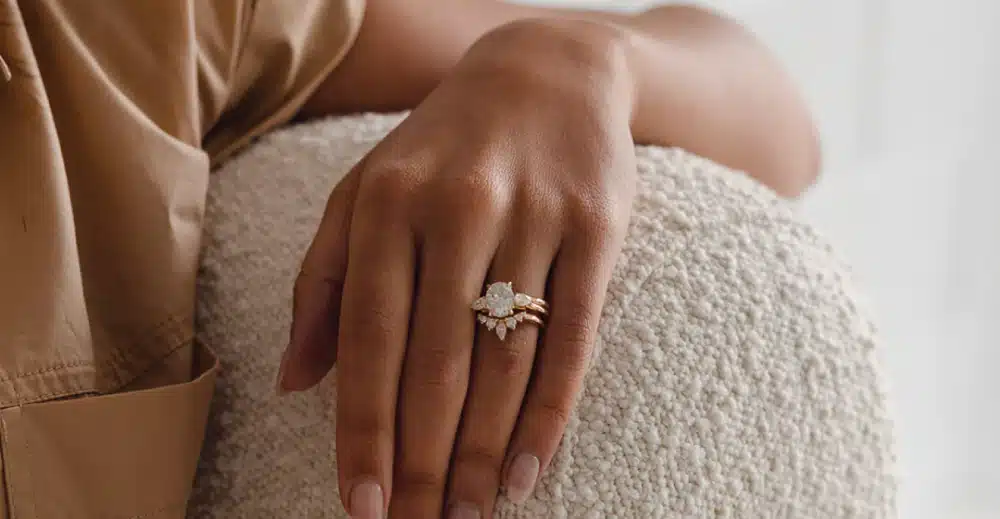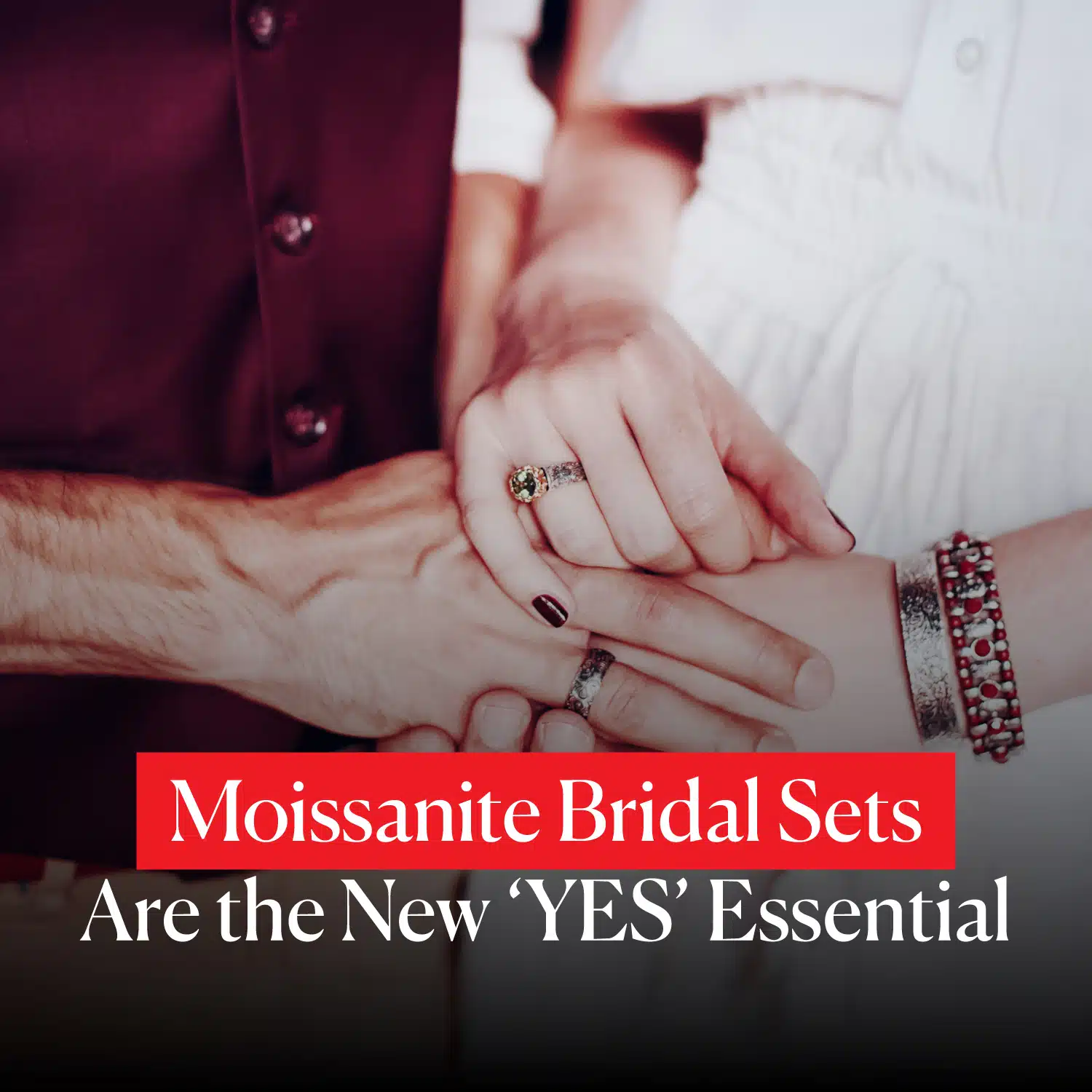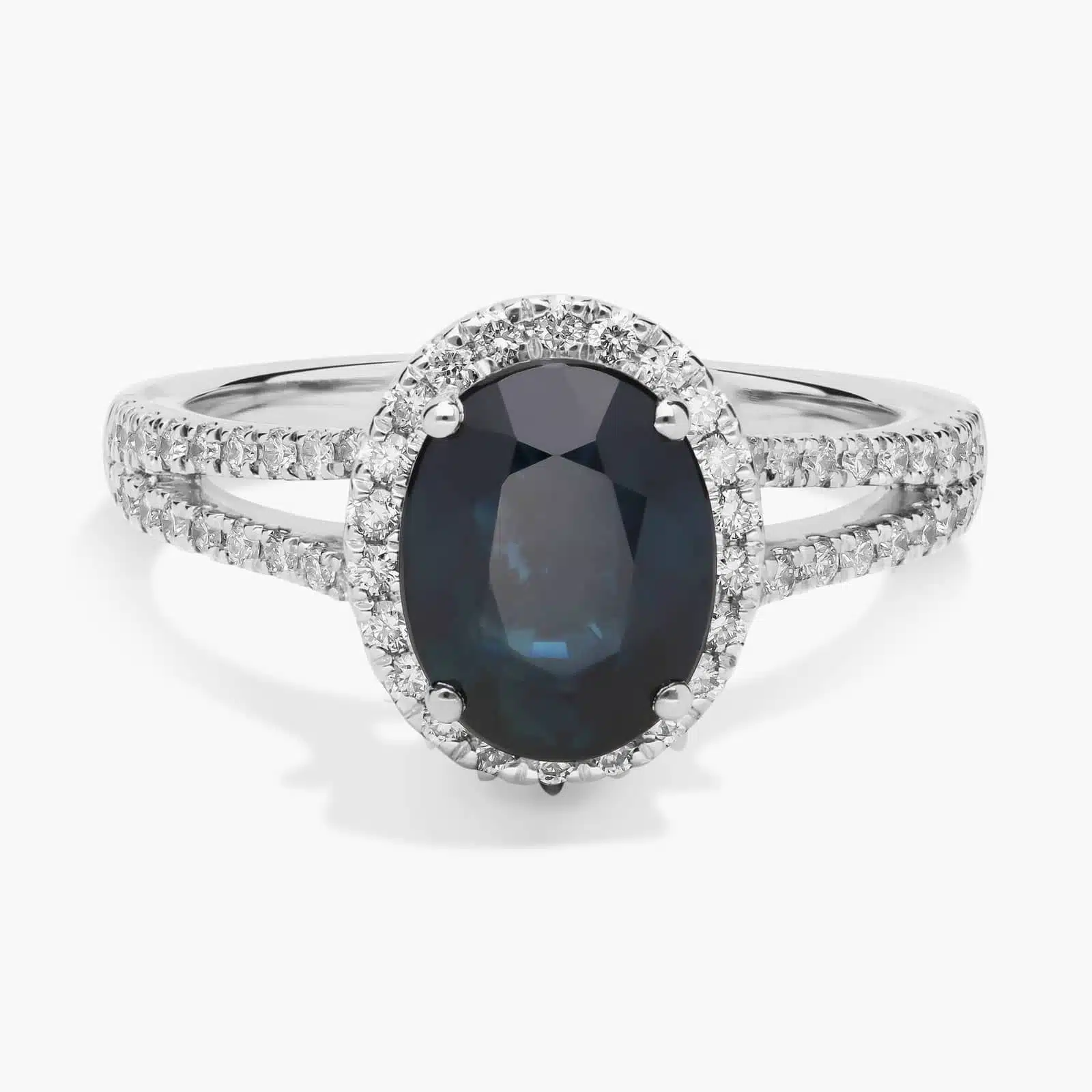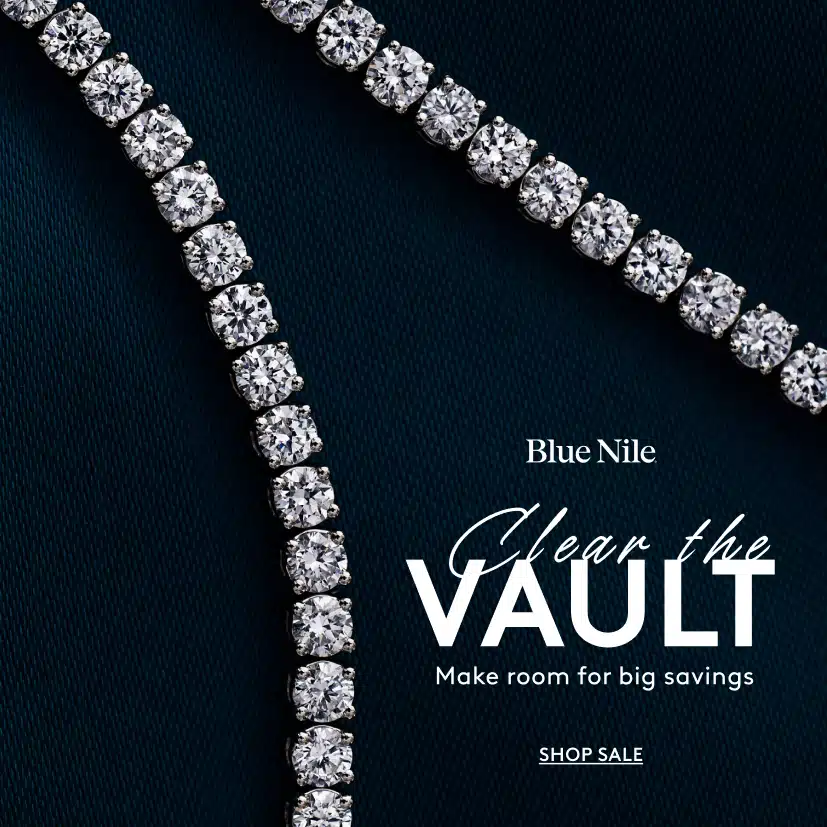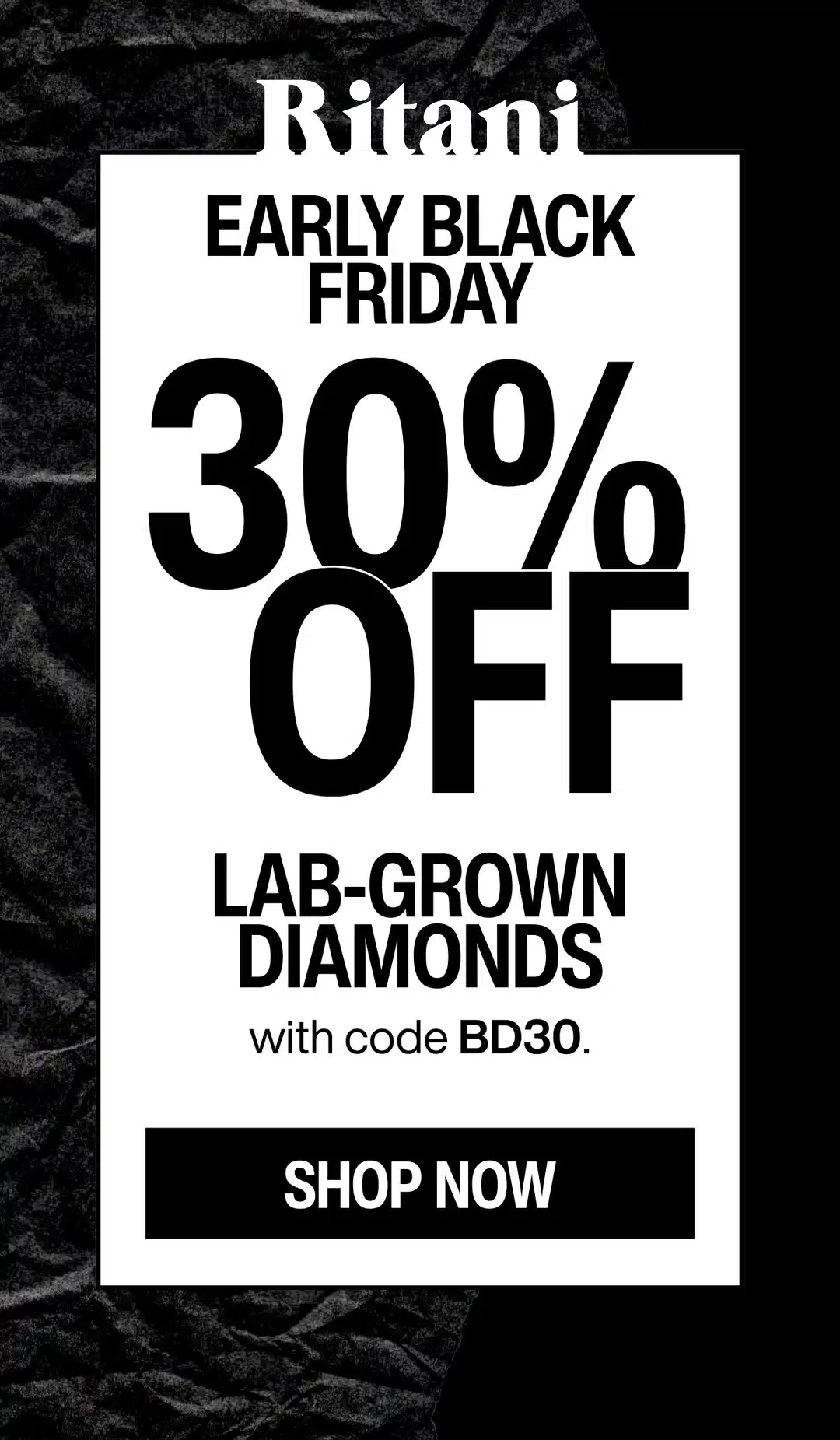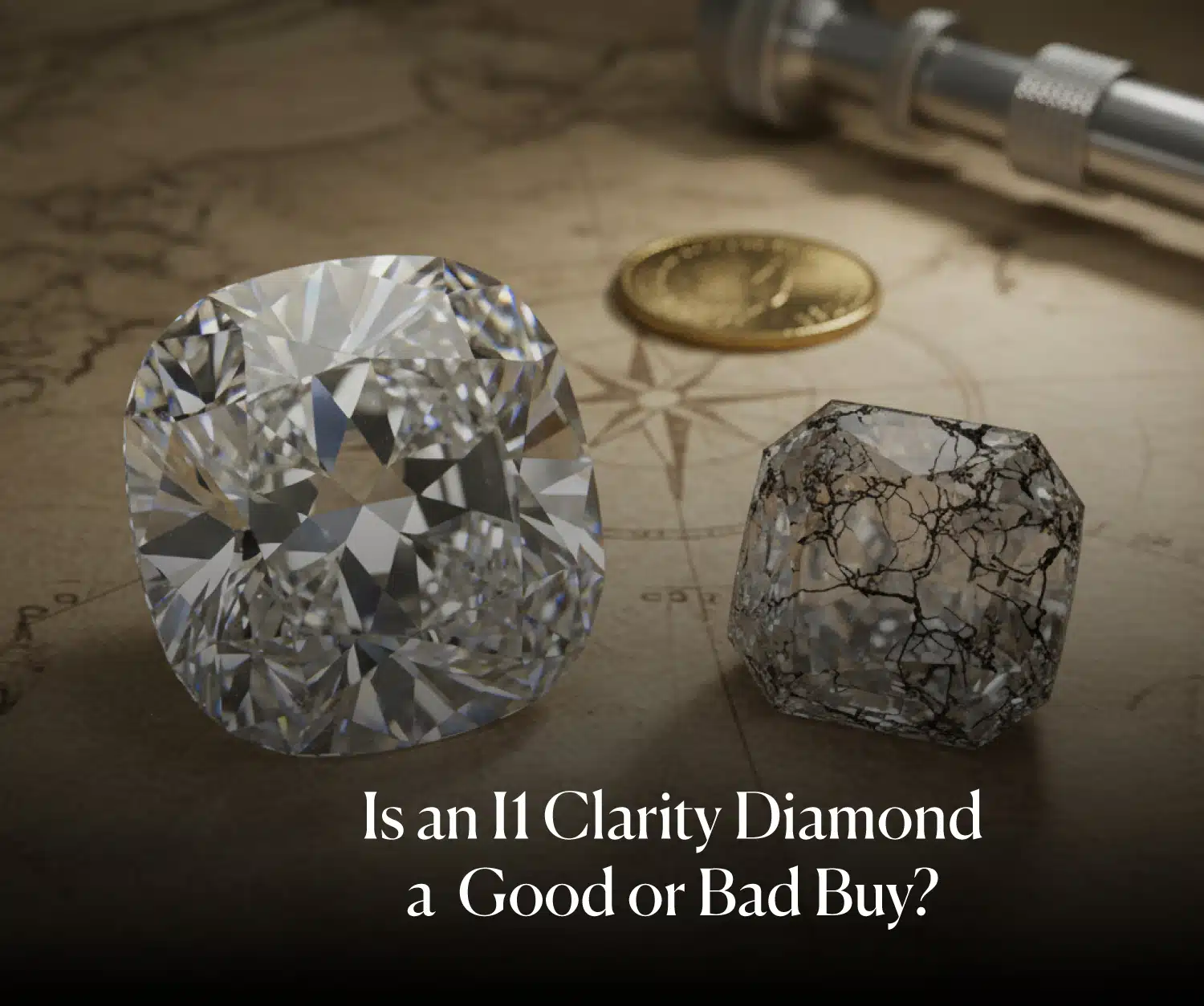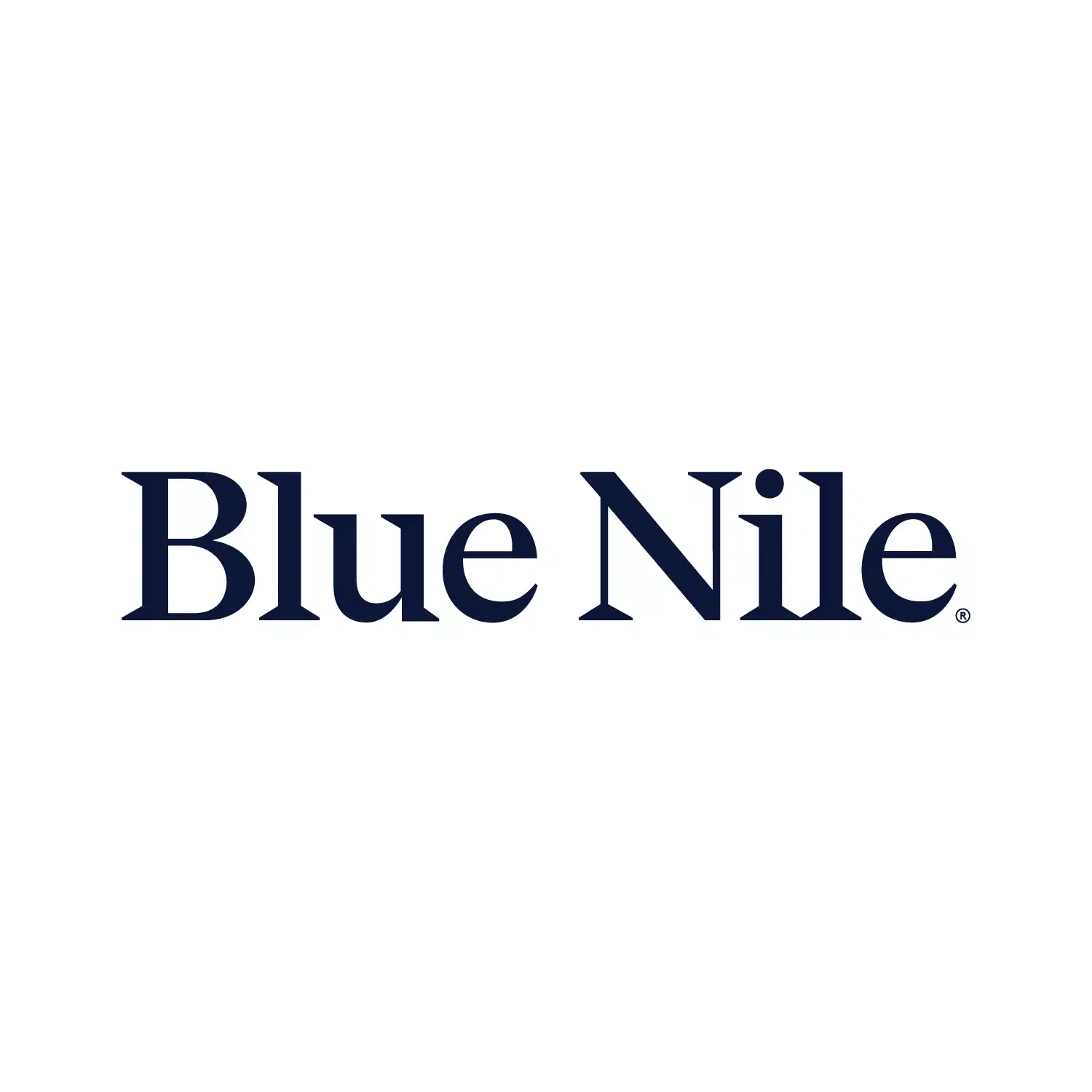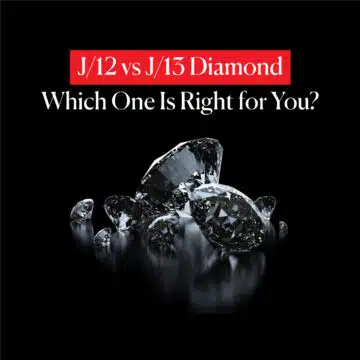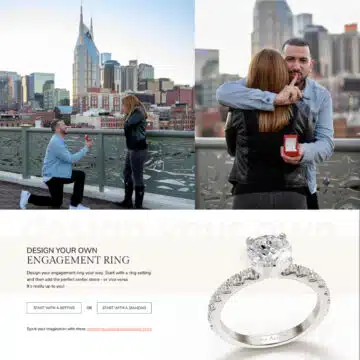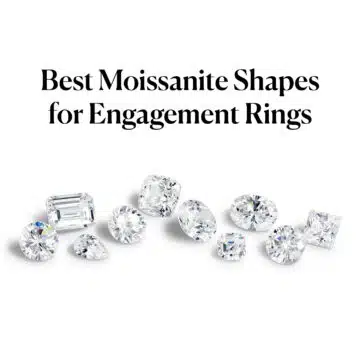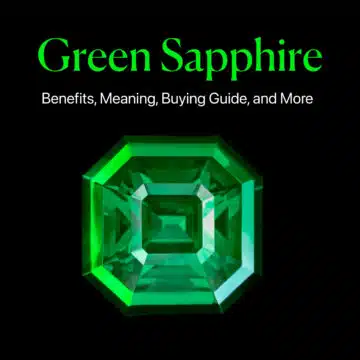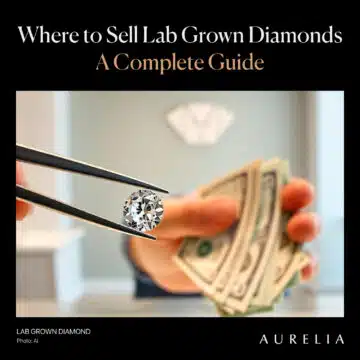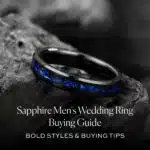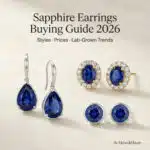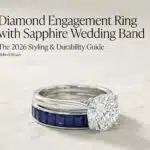Is an i1 clarity diamond good or bad? For 99% of people, it is a bad, heartbreaking, and financially catastrophic mistake. But for the 1% who are willing to become true diamond hunters, an I1 can be the single greatest deal in the entire jewelry industry.
You’re on the hunt for the biggest possible diamond for your budget, and then you see it: a huge, beautiful-looking stone with an unbelievably low price. You check the GIA report, and you see the catch: the clarity is “I1.” Your heart sinks a little. Is this a hidden gem or a piece of junk?
Deal Alert: Fast-Shipping Gifts — Up to 50% Off* fine jewelry at Blue Nile !
One In A Lifetime Sale: “Clear The Vault” – Get up to 70% OFF on select jewelry at Blue Nile !
Exclusive Offer: Flash Sale on James Allen Up to 40% Off * Sitewide engagement ring settings & Fine Jewelry at James Allen .
As a GIA-trained jeweler, I’m here to give you the brutal, unfiltered truth. We’re going to walk through the “Hall of Shame” to see why most I1 diamonds are a hard “no.” Then, I’m going to give you my secret, expert’s playbook for how to hunt for that one-in-a-thousand “unicorn” I1 that can save you a fortune.
Diamond IQ Test: Natural or Lab-Grown?
Two identical diamonds: GIA Certified, 1.51ct, D Color, VVS1, Ideal Cut. One is natural ($16,530), the other is lab-grown ($2,390). Choose the diamond you like better and see if you can match it to its origin.
What Does I1 Clarity Diamond Mean? A Jeweler’s Warning
Before you can even begin the hunt for that one-in-a-thousand “unicorn” I1 diamond, you first need to understand the beast you’re dealing with. In the polished, professional world of diamond grading, “I1” is the code word for a diamond that has officially crossed a very important line—the line of visible flaws.
So, let’s pull back the curtain on the most controversial grade in the entire industry and answer the real question: what is diamond clarity i1, and why do I call it a warning?
The GIA’s Official Definition (And What It Really Means for You)
The official i1 diamond meaning, as defined by the Gemological Institute of America (GIA), is “Included – First Degree.” Now, the GIA is a famously polite and scientific institution. This is their clinical, professional way of saying that a trained grader can see obvious inclusions under 10x magnification, and that those inclusions are almost always visible to the naked eye.
As your friend and jeweler, let me translate that for you with the brutal honesty you deserve.
I want you to imagine a beautiful, clean, white carpet. A VS1 clarity diamond might have a single, tiny white feather on it that you’d have to search for on your hands and knees to find. An I1 diamond is different. An I1 clarity diamond has a noticeable, distracting red wine stain right on that carpet.
Once you see it, you can’t un-see it.
This is the absolute core of the i1 clarity diamond good or bad debate. The GIA isn’t trying to be mean; they are giving you the unvarnished truth, a truth that is only possible because of the trust and authority that comes with their process, which I break down in my full guide on what GIA certified means.
An I1 diamond quality grade is an official declaration that the diamond’s flaws have now become a significant and noticeable feature of the stone.
The Official I1 Diamond Clarity Chart: Life in the “Danger Zone”
To truly understand why the diamond clarity i1 grade is in a class of its own, you have to see where it lives on the official GIA hierarchy. This isn’t just a list; it is a map of rarity and risk.
| Clarity Tier | GIA Grade | Mehedi’s Take: The “Neighborhood” |
| Flawless Tier | FL / IF | The Collector’s Penthouse. Perfect but pricey. |
| VVS Tier | VVS1 / VVS2 | The Luxury High-Rise. Visually perfect, on-paper perfection. |
| VS Tier | VS1 / VS2 | The Smart Buyer’s Suburb. The “sweet spot” for value. |
| SI Tier | SI1 / SI2 | The Value Hunter’s Frontier. Great deals can be found. |
| Included Tier | I1 / I2 / I3 | The Danger Zone. For Experts and Gamblers Only. |
As we discovered in my guides to VS1 and VS2 clarity diamonds, the entire game in the VS and SI tiers is about finding a beautiful “eye-clean” stone—one with no flaws visible to the naked eye. In those neighborhoods, “eye-clean” is the default expectation.
In the Included Tier, where i1 and i2 diamonds live, the entire rulebook is flipped on its head. The GIA is officially telling you that the flaws are visible. “Eye-clean” is no longer the assumption; it is the rare, one-in-a-thousand exception that you have to hunt for like a treasure hunter.
This is a completely different league of risk. This is why when someone asks me, “is i1 a good diamond clarity?” my answer always has to be, “Not for the faint of heart.” This is a journey into the danger zone, and you need a map. And that’s exactly what I’m about to give you.
The Three Flaws That Make an I1 Diamond a “Hard No”
Alright, we’ve established that the I1 clarity diamond lives in the “Danger Zone.” But what are you actually looking for? What are the specific dangers that make most of these stones an instant “pass” for a professional like me?
Welcome to what I call the “Hall of Shame.” These are the three types of catastrophic inclusions that plague the I1 diamond world. I’m going to teach you how to spot them from a mile away so you can avoid a heartbreaking mistake.
The “Black Carbon Spot” — The Kiss of Death
This is the number one, most unforgivable flaw a diamond can have, and it is rampant in the I1 clarity grade.
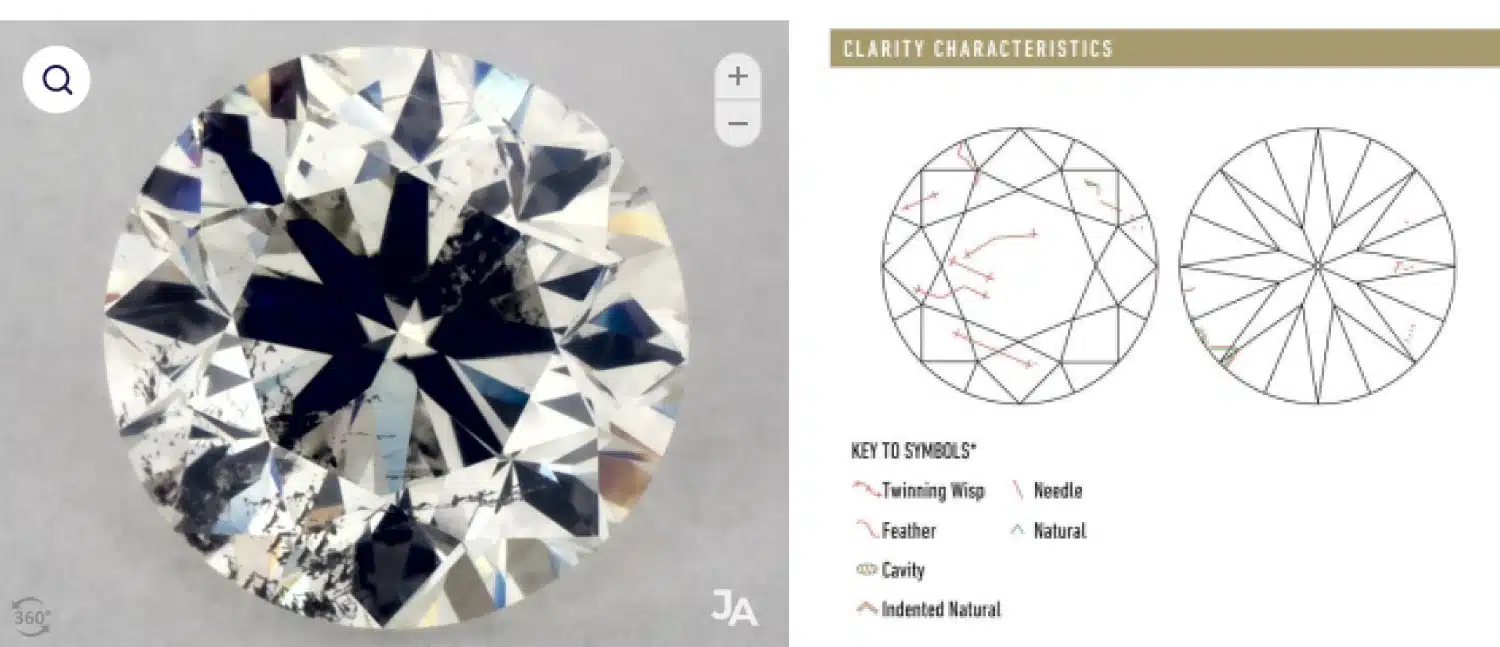
A “black carbon spot” is a small crystal inclusion that didn’t form transparently. It is, quite literally, a visible black dot inside your diamond. If this spot is located anywhere near the center of the diamond’s table (the big, flat top facet), it is a catastrophic and disqualifying flaw.
- It’s a Black Hole for Light: A diamond’s job is to gather light and reflect it. A black inclusion does the opposite; it absorbs light, creating a dead spot right where the stone should be the most brilliant.
- Your Eye is Drawn to It: Instead of being mesmerized by the sparkle, your eye will be pulled directly to the flaw, every single time. It’s like a permanent ink stain on a white wedding dress. Once you see it, you can’t un-see it.
Imagine you find a massive 2 carat Round I1 Diamond on James Allen for an incredible, almost unbelievable price. The 360° video loads… and your heart sinks.
Right in the middle is a noticeable black dot. That is the kiss of death. No amount of sparkle can hide it, no matter how good the other grades are. You must close the tab and walk away.
For a truly good diamond clarity I1 meaning, this is the first thing you must learn to reject without a second thought.
The “Cloudy” Diamond — The Sparkle Killer
This flaw is more insidious, more subtle than a black spot, but it is just as deadly to a diamond’s beauty. A cloudy I1 diamond has lost its soul.
A “cloud” is a dense cluster of microscopic pinpoint inclusions. A tiny, transparent cloud off to the side of a diamond is usually harmless. But an i1 clarity diamond often has a cloud that is large, dense, and spread throughout the stone. This creates a few huge problems:
- It Blocks Light: Instead of light passing through the diamond and reflecting back, it gets trapped and scattered by the hazy cloud.
- It Looks Hazy or Oily: The diamond won’t have that crisp, brilliant sparkle. It will look “sleepy,” milky, or even oily, especially in natural light. It lacks “pop.”
It’s the difference between looking through a freshly cleaned windowpane and a foggy bathroom mirror.
You might find a 1.5 Carat Cushion Cut I1 Diamond on James Allen that looks ‘clean’—no obvious black spots! But as you spin the 360° video, you notice the light doesn’t seem to dance. It looks dull, almost lifeless.
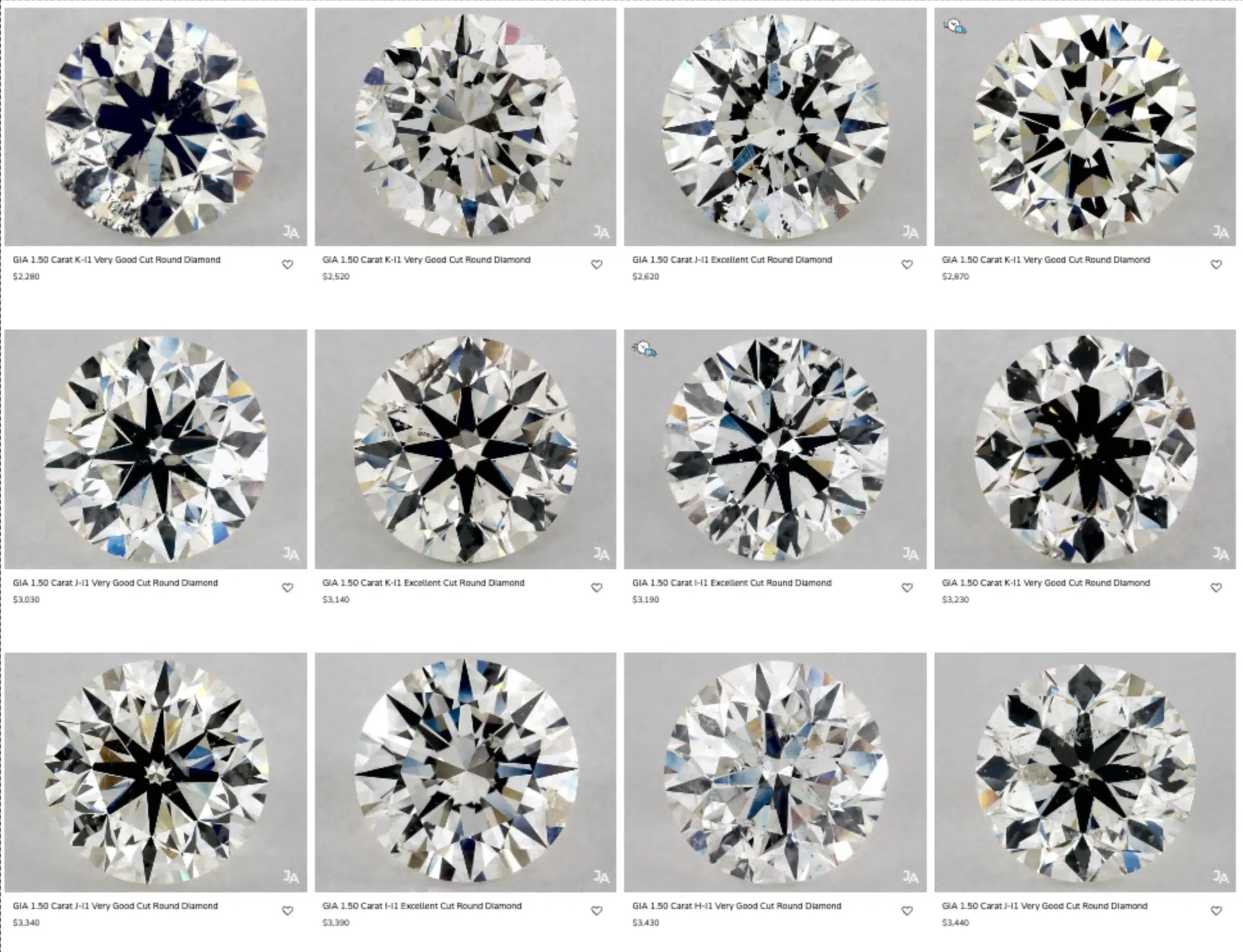
This is often the sign of a large cloud killing the brilliance from within. On a GIA report, a comment like “Clarity grade is based on clouds that are not shown” is a massive red flag that this stone is a sparkle killer.
Best Deal Of The Year – Final Days
Blue Nile’s “Clear The Vault” is ON.
Shop Fine Jewelry Upto 70% OFF.
*Exclusions may apply. See Blue Nile for complete details.
The “Structural Risk” — The Ticking Time Bomb
This is the most serious flaw of all. It goes beyond beauty and right to the diamond’s very survival. A “bad” i1 diamond isn’t just a poor value; it can be a ticking time bomb.
Certain types of inclusions, especially if they are large and located in a vulnerable spot, can compromise the diamond’s structural integrity. The two main culprits are:
- Feathers: These are small internal fractures within the diamond.
- Surface-Reaching Inclusions: Any crystal or feather that breaks the surface of the diamond.
If one of these is located near the girdle (the thin edge) or, even worse, at a sharp corner or tip of a shape like a Princess, Marquise, or Pear Shaped Diamond, it creates a major point of weakness. A single, hard knock on a countertop could cause that feather to propagate and chip or even cleave the stone.
This is the risk that turns a “bad value” into a total loss.
You find a stunning 1.50 Carat Pear Shaped I1 Diamond. But you pull up its GIA plot map and see a large “Feather” marked right at that sharp, delicate tip. That is not a diamond; that is an accident waiting to happen.
This is a level of risk you simply do not have to take in the diamond world. The smarter, safer play is always to move up the clarity ladder to the “Value Hunter’s Frontier.” A well-chosen SI1 clarity diamond, or even a stone found using a detailed SI2 diamond clarity chart, will be significantly more durable and a much, much safer long-term investment.
How to Hunt for the One-in-a-Thousand Good “Unicorn” I1
Alright, we’ve walked through the “Hall of Shame.” Your heart is probably telling you to run for the hills and never even glance at an I1 diamond again. And for 99% of people, that’s still the right call.
But now, I’m going to speak to the 1%. I’m talking to the dedicated diamond hunter, the savvy shopper who loves the thrill of finding an unbelievable deal that everyone else overlooked.
Because the truth is, for every ninety-nine “bad” i1 clarity diamonds, there is one magnificent “unicorn” waiting to be discovered. It’s a stone that is technically graded I1, but is visually beautiful and “eye-clean.”
Finding it isn’t a matter of luck; it’s a matter of following a precise, expert-level strategy. This is my personal, four-step playbook for hunting that unicorn.
Step 1: Ironclad GIA or IGI Certification is Non-Negotiable
This is not a suggestion; it is the absolute, most important rule of this entire hunt. If an I1 diamond does not have a GIA or IGI report, it is not a diamond. It is a piece of junk.
Let me be even more blunt:
- An uncertified i1 diamond is a stone the seller knows is so flawed they don’t even want an expert opinion on paper.
- An “in-house certificate” for an i1 clarity diamond is the fox certifying the henhouse is secure. It is worthless.
The only reason this entire unicorn hunt is even possible is because labs like the GIA and IGI are brutally honest. Their report is your treasure map. It will tell you the truth, even if it’s ugly.
Without that map, you are flying blind into the Danger Zone, and I promise you, you will crash. Your hunt for an i1 diamond must begin, and end, with the filter set to “GIA” or “IGI.” It’s the only way.
Step 2: Choose Your Shape Wisely (The Art of Camouflage)
This is where the amateur gets wiped out, and the pro finds their edge. The secret to finding an eye-clean i1 clarity stone is choosing a shape that is a master of disguise. You must choose a battlefield where you have the advantage.
You will ONLY hunt for a unicorn I1 in brilliant-cut shapes that are engineered for maximum sparkle and fire. Their “crushed-ice” faceting style is a natural camouflage for small inclusions. Your targets are:
- The Round Brilliant: The undisputed king of sparkle. Its facet pattern is a blizzard of light that is incredibly forgiving of inclusions.
- The Cushion Cut: The fiery, “pillowy” shape is another fantastic hider of flaws. My in-depth Cushion Cut Diamond guide explains why its sparkle is so effective.
- The Radiant Cut: A Radiant Cut diamond combines the elegance of an emerald cut with the fire of a round brilliant. It’s a top-tier choice for this hunt.
Conversely, you must NEVER attempt this hunt with a step-cut diamond. These shapes are like a hall of mirrors and are brutally unforgiving. Stay away from:
- The Emerald Cut: Its long, open facets will put any I1 inclusion on a giant, unforgiving stage.
- The Asscher Cut: The beautiful, concentric squares of an Asscher Cut have the same effect. There is simply nowhere for a flaw to hide.
Step 3: Master the GIA Plot Map: Location, Location, Location
You’ve got your GIA report. You’ve chosen your battlefield. Now, you must learn to read your map like a general. The secret to a good diamond clarity i1 stone is never the type of inclusion, but its placement.
Look at the GIA report’s “clarity plot”—that little diagram of the diamond. Your entire mission is to find a stone where the “red wine stain” isn’t in the middle of the carpet.
- Deal-Breaker Inclusions (The “Hard No”): A large crystal, cloud, or feather located directly under the “table” (the large, top facet). This will almost always be visible. You close the tab and move on.
- Unicorn Inclusions (The Hidden Gem): Look for stones where the main inclusions are small, transparent, or white feathers and pinpoints located near the edge, or “girdle.” Why? Because these are the flaws that can either be strategically hidden by a prong or are so far off to the side that they aren’t noticeable. This is your target.
Step 4: The 360° Video Test: Your Final Exam
This is it. This is where you become the final expert. With the GIA map as your guide, you now go to the high-definition, 360° video on a world-class site like Blue Nile or James Allen. You are no longer just looking at a pretty diamond; you are conducting your final, forensic examination.
Read Our 5-Star Blue Nile Review
Check our comprehensive Blue Nile review to learn why we rated Blue Nile 5 stars for their exceptional quality and value.
You spin the diamond. You zoom in on the exact location you identified on the plot map. And you ask yourself two final, critical questions:
- Is it a “Good” Inclusion or a “Bad” Inclusion? Is the flaw you’ve located a faint, transparent, or white inclusion that gets lost in the sparkle? Or is it a dark “carbon spot” that still catches your eye?
- Does the Cut Do Its Job? Is the sparkle from the “Excellent” cut so intense that it effectively swallows the flaw as the diamond moves? Does the blizzard of light do its job and camouflage that “red wine stain”?
You’ve mastered the 4-step playbook. You understand the theory of finding that elusive, eye-clean I1 diamond. Now, it’s time to see it in action.
In the exclusive video below, I walk you through actual 360° examples of I1 clarity diamonds across all popular shapes—each carefully selected to demonstrate how strategic inclusion placement and brilliant cuts can lead to a stunning, eye-clean result.
These are the “unicorns” that prove the hunt is worth it, showcasing the incredible value you can unlock.
This is a skill you must learn. This is a concept I touched on in my Ritani vs Blue Nile review: you have to use the technology that modern jewelers provide to empower yourself. You are the final judge and jury. If a diamond i1 passes this final, rigorous test, you have done it. You have found your unicorn.
Deal Alert: Ritani’s current promotions offer exceptional value.
Discount applied automatically
Shop Lab Diamonds | Shop Settings| Pro Tip: Ritani offers price matching and free shipping.
Your “Should I Buy This I1?” Final Exam Cheat Sheet
Alright, you’ve learned my secret playbook. You understand the theory of the hunt. But when you’re staring at a real diamond on your screen with your own money on the line, the pressure is immense.
So, I’ve created this for you. This is your final exam cheat sheet. It’s a text-based flowchart, a series of brutally honest, go/no-go questions you must ask yourself for every single I1 diamond you consider. Answer every question with 100% honesty. No skipping. Let’s begin.
QUESTION 1: The Gut Check – Are you a Treasure Hunter or a Shopper?
Be honest with yourself. Do you find the idea of sifting through dozens of stones to find one hidden gem exciting? Or does that sound like a stressful, exhausting nightmare?
- NO, that sounds terrible! → STOP. And that’s perfectly okay! Your time is valuable, and your peace of mind is priceless. An I1 is not for you. Your journey should immediately pivot to my guide on the SI1 Clarity Diamond, which is the true sweet spot for smart value without the intense legwork.
- YES, I love the thrill of the hunt! → Excellent. You have the right mindset. Proceed to Question 2.
QUESTION 2: The Non-Negotiable – Is the diamond certified by GIA or IGI?
This is a simple yes or no. Look for the GIA or IGI logo right on the page.
- NO, it’s a different lab or has an “in-house” certificate. → GAME OVER. THIS IS A HARD NO. Do not pass go. Do not collect $200. This is not a diamond; it is a trap. An uncertified I1 is the most dangerous purchase in the jewelry world. Close the tab immediately and walk away.
- YES, it has a full GIA or IGI report. → Perfect. We have an honest map. Proceed to Question 3.
QUESTION 3: The Battlefield – Is it a brilliant cut that can hide flaws?
Look at the diamond’s shape. Is it a Round, Cushion, Radiant, Oval, or Pear?
- NO, it’s a step-cut like an Emerald or Asscher. → STOP. The risk is too high. You’ve chosen to fight on the hardest possible battlefield, a place where flaws have no camouflage. For these shapes, you need to be in a safer neighborhood. Your research for these stunning shapes should start with my Emerald Cut Diamond Guide.
- YES, it’s a brilliant-cut stone. → You have chosen your battlefield wisely. The sparkle is on your side. Proceed to Question 4.
QUESTION 4: The Safety Check – Is the diamond structurally sound?
Open the GIA/IGI report. Look at the “Key to Symbols” and the plot map. Are the primary inclusions listed as “Feather”? And are those feathers touching the girdle (the outer edge) or at the sharp point of a Pear or Marquise?
- YES, a large feather is touching a vulnerable edge. → STOP. This isn’t a diamond; it’s a liability. You’ve found a stone with a potential structural weakness that could lead to a chip down the road. The financial savings are not worth this catastrophic risk. Pass.
- NO, the inclusions are crystals or pinpoints, and not near a vulnerable edge. → Excellent. The stone is sound. Proceed to Question 5.
QUESTION 5: The Map – Where are the inclusions located?
Still looking at that GIA plot map, pinpoint the location of the main inclusions.
- They are right in the middle, under the main table facet. → STOP. This is a red flag. A central inclusion is the hardest to hide and the most likely to be visible to your eye. The hunt for this specific stone is likely over. Continue your search for another candidate.
- They are off to the side, near the outer edge (the girdle). → This is the unicorn’s hiding spot! This is exactly what we’re looking for. Proceed to Question 6.
QUESTION 6: The Eye Test – What type of inclusion is it?
Now, go to the 360° video. Spin the diamond and zoom in on the location you just identified on the map.
- It’s a big, dark splotch (a black carbon crystal). → STOP. This is the “Kiss of Death” we talked about. A dark inclusion absorbs light and will always be a distracting dead spot. This is a bad I1. Pass.
- It’s a transparent, white, or faint “feather” or “cloud” that’s hard to spot. → BINGO. You may have found a “good” I1. Proceed to Question 7.
QUESTION 7: The Final Exam – Does the cut’s sparkle make it disappear?
Keep watching that 360° video. As the diamond moves and flashes, does the brilliant sparkle from the “Excellent” or “Ideal” cut completely overwhelm and hide the inclusion you found?
- NO, I can still track the flaw easily as the diamond moves. → STOP. The camouflage isn’t working. The cut is not doing its job of hiding the flaw. This diamond will not be eye-clean. You are so close, but this is not the one. Pass.
- YES, the flaw completely disappears in the blizzard of sparkle. → Your heart should be pounding. You are on the verge of victory. Proceed to the Final Question.
QUESTION 8: The Endgame – Can a prong cover it?
Look at the location of that faint, transparent inclusion near the edge. Is it in a spot where one of the prongs from your chosen setting will strategically sit on top of it, hiding it forever?
- NO, it’s in between where the prongs will be. → This is a judgment call. The diamond may still be eye-clean, but it’s a final, small risk.
- YES, a prong will cover it perfectly. → CONGRATULATIONS. You have found your unicorn. You have successfully navigated the most dangerous territory in the diamond world and have emerged with a spectacular stone for a price no one else would believe. Proceed with the purchase, and know that you have earned it.
The Real Numbers Behind the I1 Diamond Cost
So, you’ve learned the secret playbook. You know how to hunt for that one-in-a-thousand “unicorn” I1 diamond. But now we get to the big question: what is the reward for all that hard work? What does the I1 diamond price actually look like, and how much can you realistically save?
The numbers are dramatic. But this is also where we need to have a very honest conversation, especially when we talk about lab-grown diamonds. The high-risk, high-reward proposition is not the same for every type of stone. Let’s break down the real numbers.
The Triple-Excellent Cut Myth vs. Reality (And the Price Shock)
You’ll notice that the I1 unicorn hunters rely heavily on the Cut to save the day. The diamond world calls the highest quality a “Triple Excellent” or “Triple X” cut (Excellent Cut, Excellent Polish, Excellent Symmetry).
This is the absolute best camouflage a diamond can wear. However, I want to show you the brutal truth in black and white. Below are two GIA-certified 1.5 Carat Round Diamonds, both with an Excellent Cut—the best camouflage money can buy.
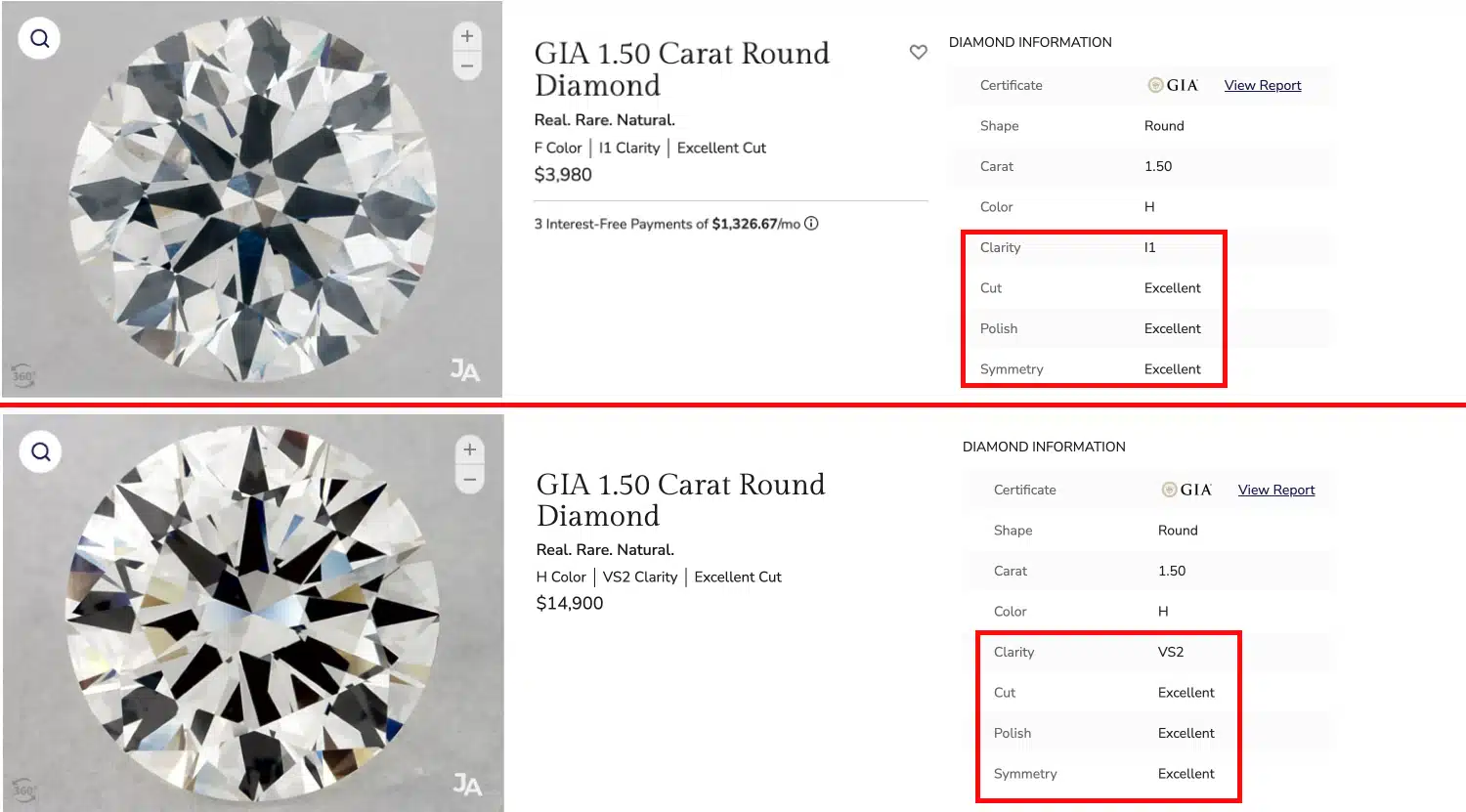
Look closely at the price tags. The I1 clarity diamond is listed for $3,980, while the guaranteed eye-clean VS2 clarity diamond is listed for $14,900. That’s not a discount; that’s a $10,920 clarity penalty you pay for peace of mind. The image shows the price of safety, and it is immense.
The difference between the I1 and VS2 is dramatic, not just in appearance but in price, showcasing the massive premium you pay for peace of mind.
The Cost of a Natural GIA I1 Diamond: A Shocking Discount
When you are hunting for a natural, earth-created diamond, successfully finding a beautiful, eye-clean i i1 diamond is the ultimate grand prize. Because the “Included” tier carries such a heavy stigma in the market, the price plummets. This is where you can find some of the most dramatic savings in the entire jewelry industry.
The i1 diamond price is a reward for your expertise and patience.
Natural GIA I1 Diamond Price (Approximate – I Color, Excellent Cut)
| Carat Weight | Example I1 Diamond Price | Potential Savings vs. a VS2 |
| 1.0 Carat | ~$2,500 – $3,500 | Up to 40% Cheaper |
| 2.0 Carat | ~$7,000 – $9,000 | Up to 50% Cheaper |
Look at those numbers. That is a jaw-dropping discount. It means that for the price of a beautiful 1-carat VS2 diamond, you might be able to find an eye-clean 2-carat I1 diamond. This is how a savvy shopper can get a 2-carat ring on a 1-carat budget.
Imagine you’re on James Allen and you find that “unicorn” 2.51 Carat, H-Color, I1 Clarity Diamond for $15,170. You’ve inspected it, the inclusion is a harmless white feather near the edge that will be covered by a prong.
You’ve won. You’ve just acquired a visually flawless, massive hi i1 diamond for a price that no one else in the room would believe.
James Allen: Our 5-Star Choice for Price and Selection
Check our comprehensive James Allen Review to learn more about their pricing and commitment.
The “i1 diamond clarity good or bad” debate ends when you find a stone like this. The financial reward for a successful hunt in the natural diamond world is undeniable and absolutely massive.
The Cost of a Lab-Grown GIA/IGI I1 Diamond: A Gamble Not Worth Taking
Now, we need to have a brutally honest conversation. While hunting for a natural I1 is a high-risk, high-reward adventure, hunting for a lab-grown I1 is, in my professional opinion, a fool’s errand.
The game is completely different here, and the math just doesn’t make sense. Here’s why.
Lab-grown diamonds have already revolutionized the market by making higher clarity grades incredibly affordable. A guaranteed eye-clean, high-quality VS2 lab diamond is already an unbelievable bargain.
Let’s look at the numbers for a 1-carat lab stone:
- A guaranteed eye-clean GIA/IGI VS2 might cost you around $1,000.
- A high-risk GIA/IGI I1 might cost you around $700.
Yes, you’re saving $300, but is that 30% savings worth the massive downgrade in quality and the huge risk that the stone will be visibly flawed? Is it worth the hours you’ll spend hunting for a “good” one, when you could just click “buy” on a perfect-looking VS2 and be done?
In my opinion, absolutely not. The value proposition of a diamond clarity i1 i2 stone completely collapses in the lab-grown market. The small financial reward is simply not worth the huge aesthetic risk.
As one Reddit user wisely advised in a thread, when it comes to the lower grades, the “headache” isn’t worth it. For a few hundred dollars more, you get a guarantee of beauty. This is the ultimate “no-brainer.”
The Bottom Line: Where to Hunt (And Where Not To)
My final recommendation is firm and unwavering.
- For Natural Diamonds: If you have the patience, the skill, and the willingness to do the hard work, the hunt for a unicorn I1 is a thrilling and potentially hugely rewarding adventure.
- For Lab-Grown Diamonds: Do not bother. The risk is not worth the small reward. The “i1 vs si1” or even “vs2” debate is so much smarter in the lab world. Stick to the guaranteed “eye-clean” sweet spot of VS2 and above and enjoy the peace of mind. The value is already there. Don’t take an unnecessary gamble to save a few extra bucks.
The Clarity Ladder: Where I1 Truly Stands in the Value Game
So, you’re a value hunter. I love that. My entire philosophy is built on helping you get the most beautiful possible diamond for your hard-earned money. But being a value hunter means understanding the critical difference between a smart, calculated risk and a reckless gamble.
This is where the I1 clarity grade gets put to the final test. To truly understand its place, we need to see it in a direct, head-to-head showdown with its two closest neighbors on the value ladder: the SI1 and the VS2. This is the ultimate showdown for the savvy shopper.
The Gamble vs. The Safe Bet: I1 vs. SI1
This is the most important comparison for any true value hunter. You’re standing at a crossroads. Down one path is a potential grand prize, but it’s guarded by dragons. Down the other is a guaranteed win, but the prize is slightly smaller.
\First, let’s talk about the SI1 clarity diamond. The “SI” stands for “Slightly Included.” This grade is the undisputed champion for savvy buyers who want a great deal. Here’s why:
- An SI1 has minor inclusions that are noticeable to a grader under 10x magnification.
- However, the vast majority of GIA-certified SI1 clarity diamonds are beautifully “eye-clean.”
- They are significantly less expensive than the VS tier, making them a true sweet spot. As one Reddit user perfectly stated, “An eye clean SI1 is a great thing to find because of those cost savings.”
The real difference between these two grades is not what you might save, but your tolerance for risk and the amount of work you’re willing to do.
A well-chosen SI1 is a “low-risk, high-reward” proposition. A well-chosen diamond i1 is a “high-risk, even-higher-reward” proposition. Choosing an I1 is like trying to draw an inside straight in poker—the payoff is massive if you hit it, but the odds are not in your favor.
The Ultimate Showdown: I1 vs. SI1 vs. VS2
Let’s put all three value champions on a single scorecard. This is my definitive verdict, based on years of experience, to help you choose your path.
| Grade | The Risk | The Reward | Mehedi’s Verdict |
| I1 | High. Most are visibly flawed. | Huge savings if you find a unicorn. | Only for expert-level hunters. |
| SI1 | Low. Most are eye-clean. | Excellent, significant savings. | The smarter value play for most. |
| VS2 | None. Guaranteed eye-clean. | Good savings vs. higher grades. | The “no-stress” value option. |
My advice is simple.
- If you want the peace of mind of a guaranteed, no-questions-asked eye-clean diamond that still offers great value, choose the VS2 clarity diamond. It is the safest bet on the value board.
- If you are a confident researcher and you are willing to use the 360° videos and GIA plot maps to do your homework, the SI1 diamond clarity grade is your ticket to the single best bang for your buck in the entire diamond world.
- And the I1 diamond? It is for the true treasure hunter, the one who loves the thrill of the chase more than anything. If you have the patience to look through a hundred stones to find that one perfect unicorn, the rewards can be incredible.
But for everyone else, the safer, smarter, and far less stressful path to a beautiful, eye-clean diamond lies in the SI1 and VS2 grades.
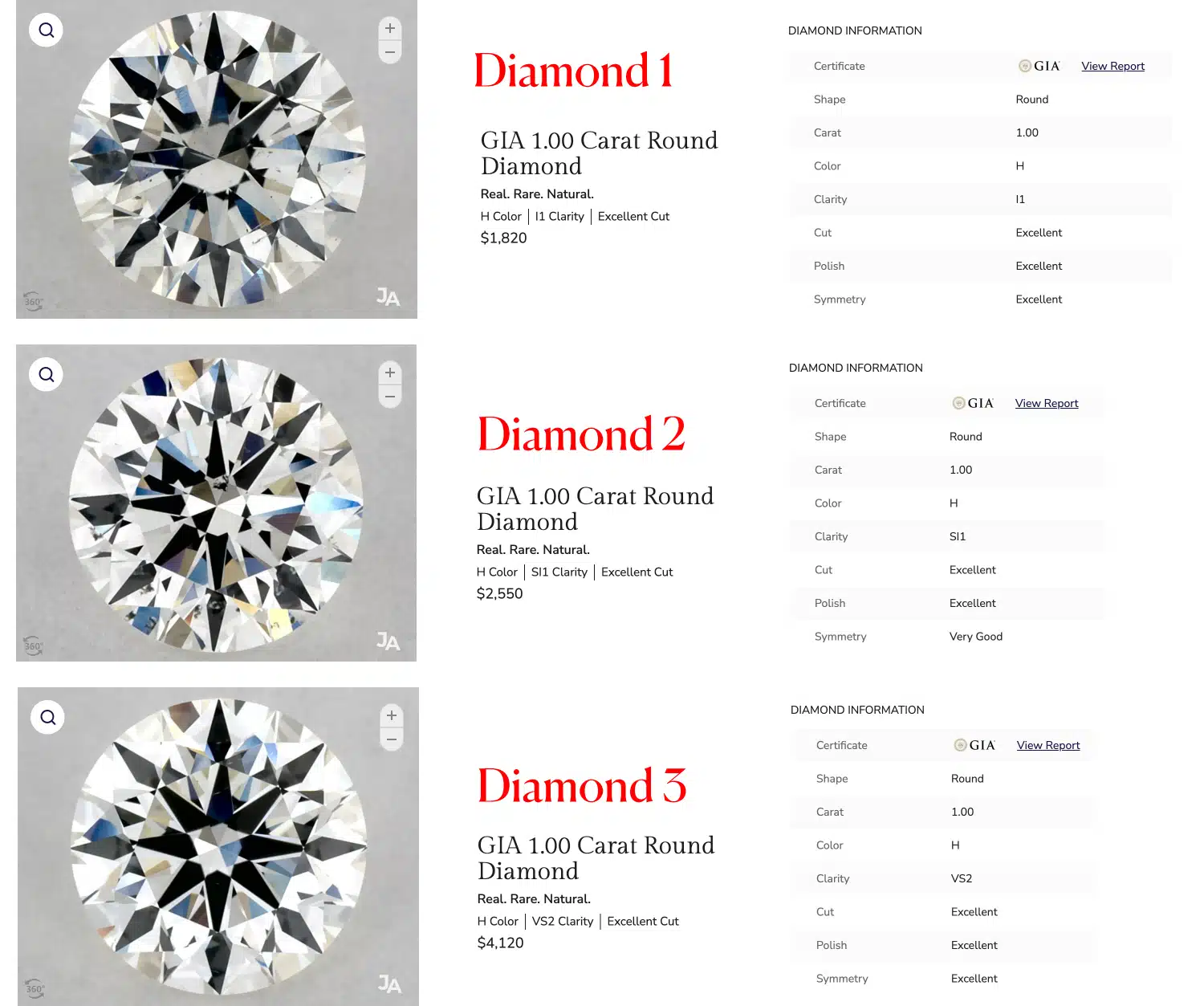
Look closely at the diamonds above. They are all nearly identical 1.00 Carat, H Color, Excellent Cut stones. The only significant difference is the clarity, and the price tells the whole story.
The VS2 is the guaranteed safe bet, costing $4,120 for total peace of mind. The SI1 is the value hunter’s sweet spot, dropping to $2,550.
Finally, the high-risk I1 drops down to $1,820—the absolute largest discount. You can instantly see the physical trade-off you are making as you move down the clarity ladder, which is why your careful inspection is the most important step of all.
FAQs About I1 Clarity Diamond
Alright, we’ve gone deep into the “Danger Zone.” We’ve learned how to spot the duds and how to hunt for the unicorns. But I know that when you’re talking about a grade with this much risk, a flurry of specific, practical questions starts to bubble up.
This is the moment for straight talk. As your friend in the business, I’m going to answer the most common—and the most important—questions I get about this controversial clarity grade, with no fluff and no nonsense.
The Final Verdict: My Honest Recommendation as Your Jeweler
So, we come to the end of our deep dive into the Danger Zone. We’ve walked through the Hall of Shame, we’ve learned the four-step playbook for hunting the unicorn, and we’ve answered the toughest questions.
Now, it’s time for the final call. After all of this, what’s my last word on the i1 clarity diamond good or bad debate?
As your friend and GIA-trained expert, my final verdict is this: The I1 diamond is not a diamond; it is a project. It is a high-risk, high-reward treasure hunt. For the 1% of buyers who are willing to do the exhaustive, expert-level work—to become a hunter—the reward can be a massive diamond for an unbelievable price.
But for the other 99% of you who simply want a beautiful, brilliant, and reliable diamond for your engagement ring, my advice is direct and unwavering: Stay away. The risks are too high, the duds are too plentiful, and the potential for a heartbreaking mistake is simply not worth the savings. Your peace of mind is worth more.
The savvy shopper’s victory is not found in the I1 lottery ticket; it is found one step up the ladder, in the incredible, reliable value of the SI and VS clarity grades.
To make that final call even simpler, here is my at-a-glance summary of this dangerous but potentially rewarding grade.
| Pros of an I1 Diamond (The “Unicorn”) | Cons of an I1 Diamond (The Reality) |
| Huge, unbelievable savings possible. | Most are visibly flawed. Period. |
| Can get a much larger stone for your budget. | High risk of a dull, “sparkle-killer” stone. |
| A thrilling “hunt” for savvy shoppers. | Potential for structural durability issues. |
| The ultimate “bang for your buck” deal. | Requires expert-level inspection skills. |
Your Journey Continues: From Hunter to Expert
Congratulations. You have just completed the most advanced masterclass in diamond clarity. You have gone where few buyers dare to go, and you have emerged a smarter, more powerful, and more confident shopper. You now have the knowledge to protect yourself and make a decision you can be proud of for a lifetime.
Your journey isn’t over, though. It’s just beginning. You’ve mastered clarity, and now it’s time to become an expert on every other facet of this incredible purchase. These are the hand-picked guides I’ve written to get you across that finish line.
First, See How the Top Jewelers Handle Quality
You know what to look for. Now see which top-tier online jewelers meet the standard and which ones are taking risky shortcuts.
- This is a must-read. See my shocking, undercover investigation into the “Gamble vs. The Guarantee” in my definitive review: Vrai vs Blue Nile: My Honest Story.
- It’s the ultimate insider’s play. Learn my secret strategy for combining two top jewelers to build one perfect ring: The Unspoken Truth About Ritani vs James Allen.
Next, Master the Art of the Purchase & The Psychology of the Choice
Let’s move from the “what” to the “how,” “when,” and “why.” These guides are my insider’s playbook for the practical and emotional steps of your journey.
- This is the most common and stressful mistake couples make. My foolproof timeline is here: When Do You Buy Wedding Rings? A Stress-Free Plan.
- Don’t just think about the diamond; think about its home. I break down the crucial importance of a quality setting in my guide, Is Blue Nile Good for Engagement Rings?
- This is the ultimate question, and the answer is rarely simple. My real, no-nonsense advice is in my guide, How Much to Spend On a Wedding Ring.
Finally, Get Inspired by the Breathtaking Possibilities
A diamond ring isn’t just a collection of grades; it’s a work of art. These guides are here to spark your imagination and introduce you to a world of stunning options.
- You know that Cut is king. For the person who wants the absolute pinnacle of sparkle, you must read my deep dive on Hearts and Arrows Diamonds.
- Ready to build your masterpiece from scratch? My step-by-step guide, How to Build Your Own Engagement Ring on James Allen, will give you all the confidence you need.
- Thinking beyond a traditional engagement ring altogether? Explore the timeless elegance of a Diamond Tennis Bracelet.
Blue Nile is one of the biggest and most recognized online jewelry retailers, offering an extensive and exclusive inventory. Their high-resolution images are improving and getting closer to the quality offered by James Allen, while their prices remain highly competitive. Right now, Blue Nile offers up to 30% savings on jewelry during a limited-time sale.
WHAT WE LOVE ABOUT THEM:
- 30-day no-questions-asked return policy, with a prepaid shipping label provided by Blue Nile.
- Lifetime warranty on all purchases.
- Free shipping on every order.
- Complimentary services every six months, including prong tightening, repolishing, rhodium plating, and cleaning.
- Insurance appraisal included with your purchase.
- One free resizing within the first year.
- High-quality images available for roughly half of their diamond selection.
- 24/7 customer service support.
- Full credit toward future upgrades, as long as the new item is at least double the value.
- Best-in-class order fulfillment process.
James Allen is a top leader in online diamond sales, offering cutting-edge imaging technology that lets you inspect diamonds as if you were using a jeweler's loupe. With the largest exclusive selection of loose diamonds available online and excellent pricing, they also boast one of the finest collections of lab-created diamonds on the market. They currently run a 25% discount on selected lab-grown diamonds!
WHAT WE LOVE ABOUT THEM:
- 30-day no-questions-asked return policy, with a prepaid shipping label provided by James Allen.
- Lifetime warranty on all purchases.
- Free international shipping.
- Complimentary prong tightening, repolishing, rhodium plating, and cleaning every six months.
- Insurance appraisals included with purchases.
- One free resizing within 60 days of purchase.
- Free ring inscriptions available.
- Best-in-class high-quality imagery for every diamond in stock.
- 24/7 customer support.
- Premium, best-in-class packaging.
Ritani is a trusted name in the online jewelry industry, known for its stunning collection of ethically sourced diamonds and gemstones. With a focus on transparency, Ritani offers customers in-depth diamond education and innovative features like in-store preview options, ensuring a seamless and informed shopping experience.
WHAT WE LOVE ABOUT THEM:
- Free in-store preview of loose diamonds before purchase.
- 30-day free returns, including resizing services for all rings.
- Lifetime warranty that covers prong tightening, polishing, rhodium plating, and more.
- Free insured shipping on all orders.
- Access to a wide selection of GIA-certified diamonds and lab-grown options.
- High-resolution 360° videos of diamonds for accurate evaluation.
- Ethical sourcing and conflict-free diamonds.
- Buy Now, Pay Later financing options available.
- 24/7 customer service with personalized consultations.
Taylor & Hart is a bespoke jeweler based in London, specializing in custom engagement rings and ethical lab and natural diamonds. Their craftsmanship is exceptional, and every ring tells a story—literally. With free design consultations and personal diamond sourcing, they’re perfect for couples who want a meaningful, one-of-a-kind ring that reflects their values.
WHAT WE LOVE ABOUT THEM:
- Complimentary custom ring design (with real sketches and 3D rendering).
- Free resizing, returns, and shipping—worldwide.
- Lifetime warranty against manufacturing defects.
- Ethically sourced diamonds and gemstones, including lab-grown options.
- A dedicated personal design consultant from start to finish.
- All rings come with a certificate of authenticity.
- Transparent design process with your love story engraved inside (for free!).
- High-quality craftsmanship and real attention to detail.
- Excellent reviews and strong customer support across the US and UK.


